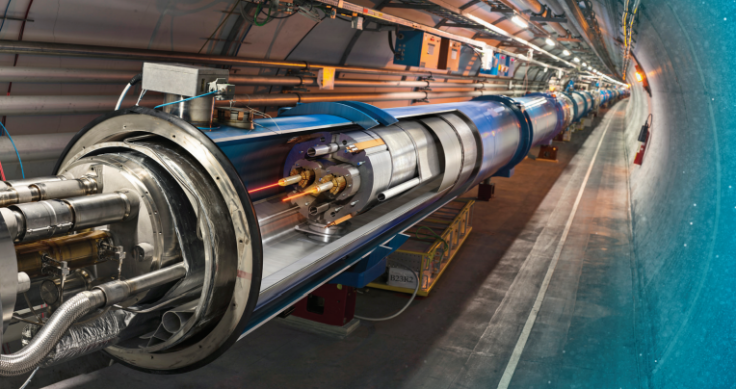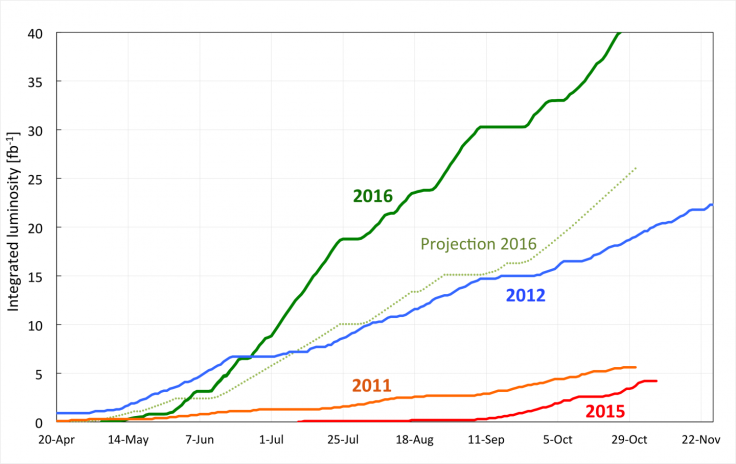CERN LHC Update: Large Hadron Collider Wraps Up 2016 Run After Smashing Through Collision Targets

It’s a wrap for the Large Hadron Collider’s latest run. On Monday, the LHC — the world’s largest particle accelerator, housed underground near the France-Switzerland border near Geneva — circulated lead ions and protons for the last time this year.
In its 2016 run, which began in May, the LHC surpassed its targets by a wide margin. The number of collisions recorded by the ATLAS and CMS detectors — two of LHC’s four largest detectors — during the proton run from April to the end of October was 60 percent higher than expected.
Overall, scientists at the European Organization for Nuclear Research (CERN) — the organization that built and operates the LHC — observed over 6.5 million billion collisions, which adds up to more data than what has been collected in the collider’s past three runs combined.

“One of the key factors contributing to this success was the remarkable availability of the LHC and its injectors,” CERN physicist Mike Lamont, who leads the team that operates the accelerators, said in a statement released Tuesday. “It’s the result of an ongoing programme of work over the last few years to consolidate and upgrade the machines and procedures.”
While the latest run of the LHC yielded more precise measurements of processes falling within the ambit of the Standard Model — a framework that describes three of the four known fundamental forces — and provided observations of the famous Higgs boson at the unprecedented energy of 13 teraelectronvolts (TeV), it drew a blank insofar as the search for new particles is concerned.
In particular, a tantalizing “bump” in 2015 data at 750 gigaelectronvolts, which had been previously detected by the ATLAS and CMS detectors, did not resurface in the much larger 2016 dataset, suggesting that it was, in all probability, the result of a statistical fluctuation.
“We're just at the beginning of the journey,” CERN Director-General Fabiola Gianotti said in a statement released in August. “The superb performance of the LHC accelerator, experiments and computing bode extremely well for a detailed and comprehensive exploration of the several TeV energy scale, and significant progress in our understanding of fundamental physics.”
Over the past few weeks, the LHC had been carrying out experiments that involved smashing lead ions against protons at a record energy of 8.16 TeV. These collisions were aimed at creating and studying something known as quark-gluon plasma (QGP), which, as the name suggests, is a mixture of quarks — the fundamental particles that make up protons and neutrons, and gluons — the force carriers that bind quarks together.
In order to recreate the conditions in the universe, when QGP existed for a fraction of a second, massive ions — in this case, lead — were made to collide head-on, creating a miniscule fireball in which everything melted to form the plasma.
The next LHC run is scheduled to begin in March 2017, and until then, particle physicists would analyze the staggering amount of data that has been collected during the collisions carried out this year.
© Copyright IBTimes 2025. All rights reserved.






















